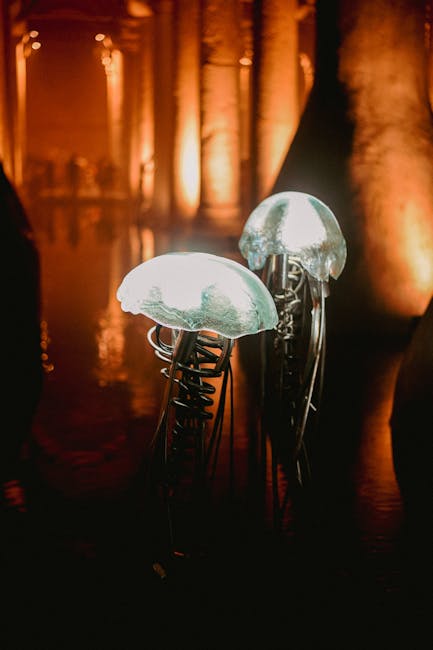-
Bioluminescent backwaters observed in Kochi, Kerala, attract tourists but raise ecological concerns. The phenomenon, locally known as “Kavaru,” is a glowing effect caused by bioluminescent organisms.
-
Bioluminescence is caused by dinoflagellates (Noctiluca scintillans) that emit light when disturbed. This is due to chemical reactions in structures called scintillons. The glow is usually blue, but may appear red or brown.
-
Eutrophication, driven by nutrient overload from industrial runoff and sewage discharge, is a major factor. High salinity, rising temperatures, and reduced rainfall also contribute.
-
High concentrations of these organisms can lead to harmful algal blooms (HABs) and red tides. This disrupts marine ecosystems, leading to hypoxia (oxygen depletion) and fish mortality.
-
HABs release toxins that affect marine and human health. This includes amnesic shellfish poisoning (domoic acid) and paralytic shellfish poisoning (Alexandrium).
-
Fishing communities suffer as fish migrate away from bloom-affected areas. Reduced catches and diminished income result.
-
Kerala’s Alleppey and Tamil Nadu’s Pitchavaram mangroves are prime examples of bioluminescent backwaters in India. Such phenomena
have been observed along other beaches and islands in India. -
Ecological imbalances are a key issue, requiring monitoring and preventive measures. International and national bodies are involved in monitoring and mitigating HABs.
-
Regulating coastal runoff, managing waste, promoting sustainable aquaculture, and restoring mangroves are key mitigation strategies. Citizen science and community engagement are crucial.
